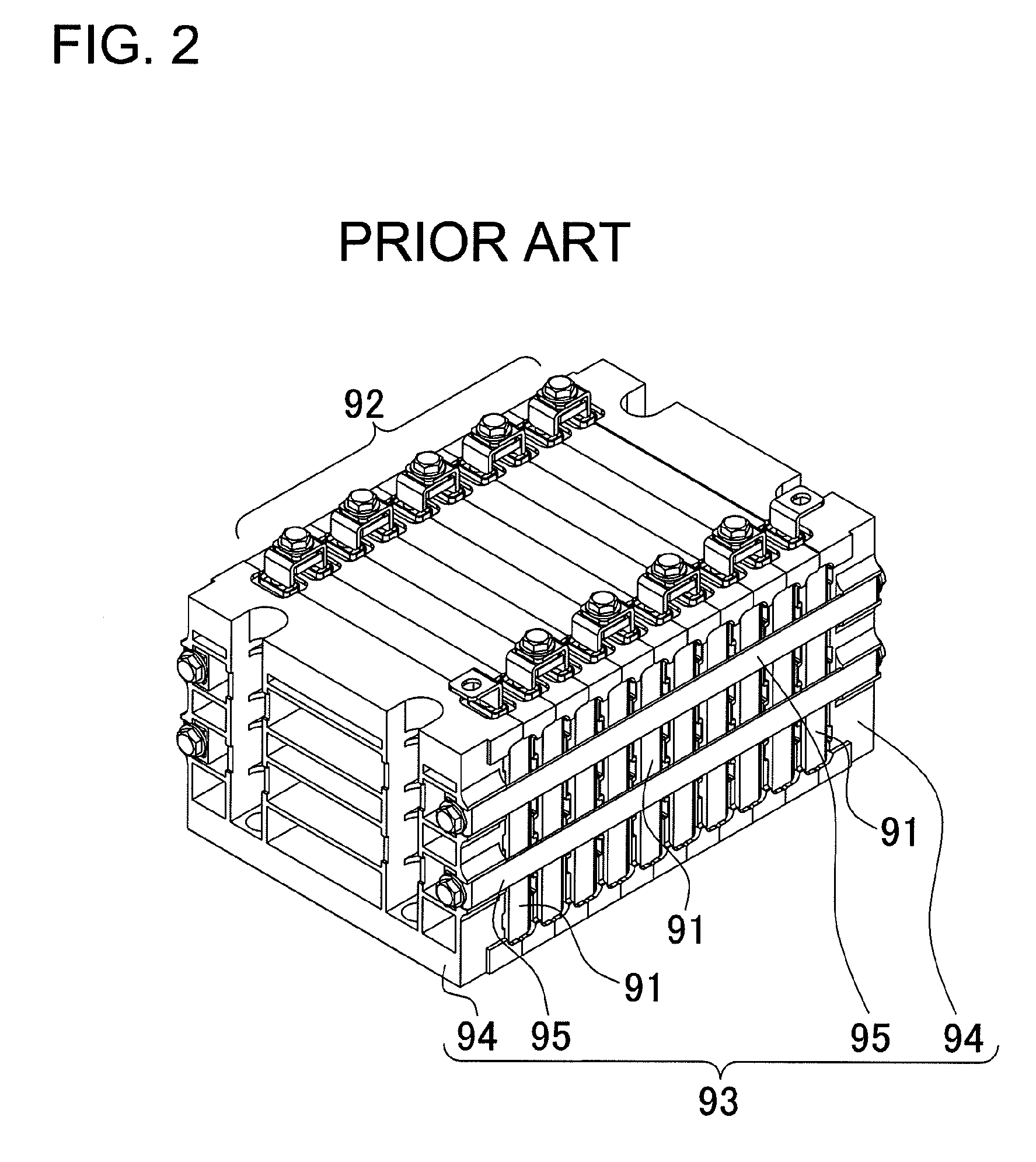Battery system with battery cells held in a stack by metal bands
a battery cell and metal band technology, applied in the field of battery systems, can solve the problems of reducing the capacity of the battery external case, increasing the internal resistance of the battery, and reducing the capacity of the battery, so as to achieve efficient cooling and high capacity.
- Summary
- Abstract
- Description
- Claims
- Application Information
AI Technical Summary
Benefits of technology
Problems solved by technology
Method used
Image
Examples
Embodiment Construction
[0032]Although the battery system of the present invention is not restricted to a specific application, it is primarily suitable as a car power source apparatus for use on-board an electrically driven vehicle such as a hybrid car or electric automobile to supply power to a driving motor.
[0033]FIGS. 3-8 show battery systems for embodiments of the present invention. FIGS. 3 and 4 show a car power source apparatus provided with four battery system units, and FIGS. 5-8 show the battery system employed in that power source apparatus.
[0034]The battery system shown in these figures is provided with a battery block 2 having a plurality of stacked battery cells 1 that are rectangular batteries, and fastening components 3 that hold the battery cells 1 of the battery block 2.
[0035]The rectangular battery cells 1 are lithium ion batteries. However, rectangular battery cells are not limited to lithium ion batteries and any rechargeable batteries, such as nickel hydride batteries can be used. A r...
PUM
| Property | Measurement | Unit |
|---|---|---|
| thickness | aaaaa | aaaaa |
| thickness | aaaaa | aaaaa |
| thickness | aaaaa | aaaaa |
Abstract
Description
Claims
Application Information
 Login to View More
Login to View More - R&D
- Intellectual Property
- Life Sciences
- Materials
- Tech Scout
- Unparalleled Data Quality
- Higher Quality Content
- 60% Fewer Hallucinations
Browse by: Latest US Patents, China's latest patents, Technical Efficacy Thesaurus, Application Domain, Technology Topic, Popular Technical Reports.
© 2025 PatSnap. All rights reserved.Legal|Privacy policy|Modern Slavery Act Transparency Statement|Sitemap|About US| Contact US: help@patsnap.com



